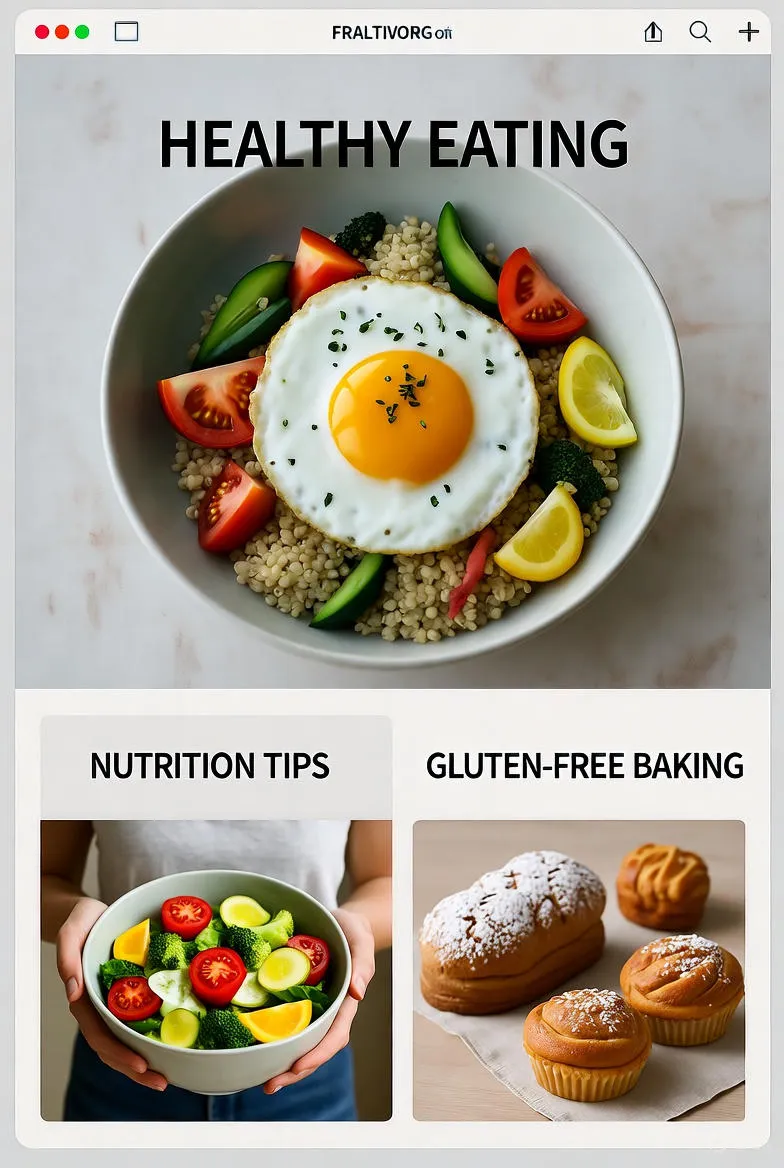Mastering Gluten Cross-Contamination: Essential Tips for a Safe Celiac Diet
Discover expert strategies to prevent gluten cross-contamination in your kitchen, shopping, and dining out. Essential tips for celiacs and gluten-sensitive individuals to maintain a safe, healthy diet.

Understanding Gluten Cross-Contamination
Gluten cross-contamination occurs when gluten-containing particles inadvertently mix with gluten-free foods, posing significant risks for individuals with celiac disease, gluten sensitivity, or wheat allergies. Even trace amounts of gluten—less than 20 parts per million—can trigger adverse reactions, including digestive distress, inflammation, and long-term health complications. This invisible threat lurks in kitchens, restaurants, and packaged goods, making vigilance essential for maintaining a truly gluten-free lifestyle.
For those newly diagnosed or long-time adherents to a gluten-free diet, grasping the nuances of cross-contamination is the first step toward empowerment. It's not just about avoiding obvious gluten sources like bread or pasta; it's about safeguarding every meal against hidden exposures. By the end of this guide, you'll be equipped with practical strategies to minimize risks and reclaim confidence in your daily eating habits.
Why Cross-Contamination Matters: The Health Implications
The stakes are high when it comes to gluten exposure. For people with celiac disease, an autoimmune disorder affecting about 1% of the global population, ingesting gluten damages the small intestine's lining, impairing nutrient absorption and increasing risks for conditions like osteoporosis, anemia, and even certain cancers. Non-celiac gluten sensitivity can cause similar symptoms—bloating, fatigue, joint pain—though without the intestinal damage.
Cross-contamination exacerbates these issues by introducing gluten in unpredictable ways. A 2019 study published in the Journal of Food Protection found that up to 32% of gluten-free products tested positive for gluten due to manufacturing cross-contact. In home settings, shared toasters or cutting boards can transfer gluten residues equivalent to a full slice of bread. Awareness of these implications underscores the need for proactive measures, turning potential pitfalls into manageable routines.
Recognizing the Signs of Accidental Exposure
Symptoms of gluten cross-contamination can mimic other digestive issues, complicating diagnosis. Common indicators include abdominal pain, diarrhea, headaches, and skin rashes like dermatitis herpetiformis. If you suspect exposure, track your intake and symptoms in a food diary to identify patterns. Consulting a healthcare provider for blood tests or endoscopy can confirm ongoing damage, guiding adjustments to your prevention tactics.
Identifying Common Sources of Cross-Contamination
Cross-contamination sneaks in from multiple avenues, demanding a holistic approach to detection and avoidance.
In the Home Kitchen
- Utensils and Appliances: Shared spatulas, colanders, or blenders used for both gluten and gluten-free items retain particles. A wooden cutting board, porous by nature, can harbor gluten indefinitely.
- Pantry Staples: Bulk bins at grocery stores or shared spice jars contaminate scoops and lids, tainting even naturally gluten-free ingredients like rice or nuts.
- Storage Mishaps: Placing gluten-free bread next to wheat-based loaves in the fridge allows crumbs to migrate via air currents or handling.
At Restaurants and Social Gatherings
Dining out amplifies risks, with shared fryers, grills, and buffets as prime culprits. French fries cooked in oil used for breaded items absorb gluten traces, while salad bars invite cross-mixing from communal tongs. Potlucks and family meals further complicate matters, as well-intentioned hosts may overlook gluten in sauces or marinades.
In Packaged and Processed Foods
Even certified gluten-free labels aren't foolproof if facilities process wheat nearby without rigorous cleaning. Oats, often cross-contaminated during harvest or milling, require specific "pure" certifications. Reading labels for warnings like "may contain wheat" is crucial, as is verifying third-party testing from organizations like the Gluten-Free Certification Organization (GFCO).
Proven Strategies to Prevent Cross-Contamination
Prevention hinges on creating dedicated gluten-free zones and habits, transforming your environment into a safe haven.
Setting Up a Gluten-Free Kitchen
- Designate Separate Tools: Invest in color-coded utensils—red for gluten-containing, green for gluten-free—to enforce visual separation. Use glass or stainless steel over wood or plastic, as they're easier to sanitize.
- Deep Cleaning Routines: Wipe surfaces with vinegar solutions or commercial gluten removers before and after prep. Run empty dishwasher cycles with high-heat settings to decontaminate racks.
- Appliance Dedication: Maintain a gluten-free toaster, microwave, and oven mitts. For shared spaces, cover gluten-free items with lids or parchment during cooking to shield from airborne flour.
Label everything clearly with markers or stickers, educating household members on protocols. This communal buy-in reduces errors and fosters a supportive atmosphere.
Smart Shopping and Storage Tips
When grocery shopping, opt for sealed, certified gluten-free products and avoid bulk aisles. At home, store gluten-free flours in airtight containers away from wheat varieties, using separate shelves if possible. Freeze gluten-free breads to preserve freshness without contamination risks. For condiments like peanut butter or mayo, use squeeze bottles to prevent knife-dipping crossovers.
Navigating Dining Out Safely
Preparation is key: Call ahead to inquire about kitchen practices, requesting dedicated fryers or grill sections. Use apps like Find Me Gluten Free to scout celiac-friendly spots with user reviews on cross-contamination incidents. When ordering, specify "no shared surfaces" and watch preparation if feasible. Carry portable wipes or a travel cutting board for picnics, ensuring on-the-go safety.
Advanced Techniques for the Vigilant Gluten-Free Eater
Beyond basics, tech and science offer enhanced protection. Gluten detection kits, like those from Nima or EZ Gluten, provide instant swab tests for surfaces and foods, offering peace of mind at events. Home water filters can remove potential gluten from ice machines, while air purifiers with HEPA filters minimize flour dust.
For bakers, dedicated gluten-free mixers and sifters prevent flour clouds from settling on countertops. Experiment with naturally gluten-free grains like quinoa or buckwheat, verifying purity through trusted suppliers. Joining online communities, such as Reddit's r/glutenfree or Celiac.org forums, yields real-world hacks from seasoned navigators.
Recipes and Meal Planning to Minimize Risks
Crafting from scratch empowers control. Simple swaps like almond flour for wheat in pancakes or tamari for soy sauce in stir-fries eliminate hidden gluten. Batch-prep gluten-free meals in isolated sessions, using disposable liners for baking sheets. This not only curbs contamination but streamlines your week, blending health with convenience.
Consider seasonal adaptations: Summer barbecues call for separate grills, while holiday feasts benefit from pre-portioned sides. Always have a "safe snack" stash—rice cakes, fruit, or dark chocolate—for impromptu situations.
What to Do After Accidental Exposure
Despite best efforts, slips happen. Immediate steps include hydration, rest, and over-the-counter aids like activated charcoal or digestive enzymes to bind gluten. Probiotics can restore gut balance, while anti-inflammatory foods—think turmeric tea or bone broth—aid recovery. Monitor for severe reactions, seeking medical help if symptoms persist beyond 48 hours.
Post-exposure, review your routine: Was it a new product? A shared utensil? Adjust accordingly, perhaps by trialing stricter protocols. View mishaps as learning opportunities, not failures, reinforcing resilience in your gluten-free journey.
Building a Supportive Gluten-Free Community
You're not alone in this. Connect with local support groups through the Celiac Disease Foundation or Beyond Celiac for workshops on contamination avoidance. Share your tips on social media, inspiring others while crowdsourcing innovations. Educating friends and family—via casual chats or printed guides—amplifies your safety net, turning potential exposures into teachable moments.
Advocacy extends to policy: Support labeling laws and restaurant training initiatives, contributing to broader systemic change. By weaving these threads, your personal strategies ripple outward, fostering a more inclusive world for gluten-free living.
Conclusion: Empowering Your Gluten-Free Life
Dealing with gluten cross-contamination demands diligence, but the rewards—a nourished body, reduced anxiety, and culinary freedom—are profound. Start small: Audit your kitchen today, practice one new tip weekly. Over time, these habits solidify, allowing you to savor meals without second-guessing. Remember, a gluten-free life isn't restrictive; it's a deliberate choice for vitality. Embrace it fully, and watch your well-being flourish.
(Word count: 1,248)


